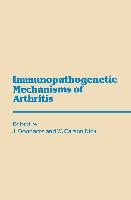- Start
- Immunopathogenetic Mechanisms of Arthritis
Immunopathogenetic Mechanisms of Arthritis
Angebote / Angebote:
The fundamental problem facing scientists and clinicians in Rheumatology is that so little is known about the biology of joints. It is our view that a real interface between basic and clinical science offers the best chance of gaining a better understanding of arthritis and in this book we aim to provide a basis for such an interface. Each chapter provides a lucid account of the current literature, reflecting the eminence of each author in their own field. The contributors offer a variety of modern approaches to the study of inflammatory joint disease, illustrating some of the exciting opportunities for research which exist. We hope that those who share our view find these pages informative and stimulating. University of Newcastle upon Tyne, 1987. JOHN A. GOODACRE W. CARSON DICK ix 1 . Polymorphonuclear leukocytes In acute inflammation O. T. G. JONES and A. R. CROSS INTRODUCTION The nonnal function of the professional phagocytes - polymorphonuclear leukocytes (PMN), monocytes, macrophages and eosinophils - is to protect the individual from microbial infection by seeking out and destroying the invading microbes. In order to perform this function effectively the phagocyte must move towards sites of infection, recognize, phagocytose, kill and digest the microbe and, if necessary, recruit other cells to assist. These phagocytic cells possess a membrane-bound enzyme system which can be activated to produce toxic oxygen radicals in response to a wide variety of stimuli.
Folgt in ca. 5 Arbeitstagen
